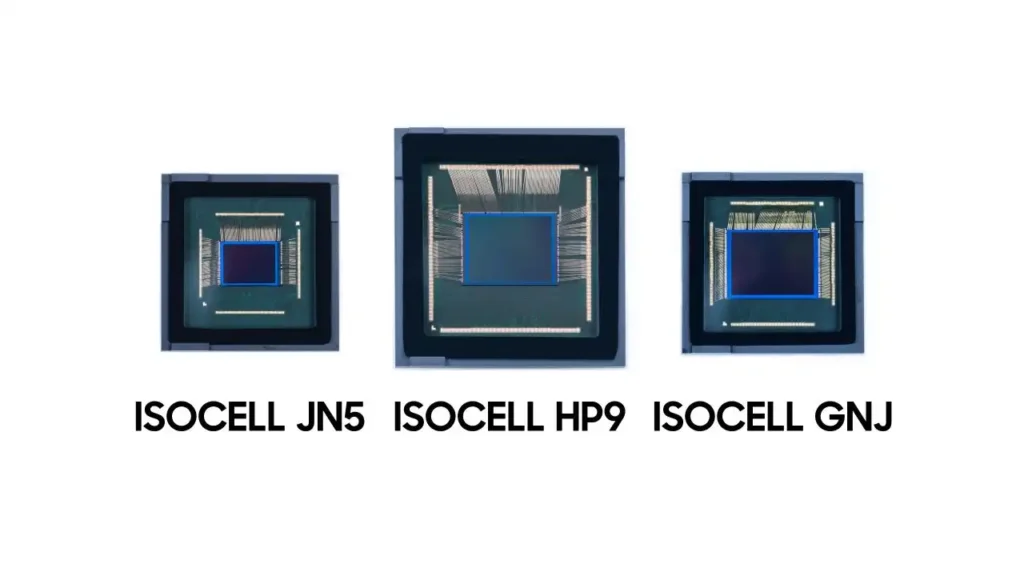As the user’s expectations for image quality continue to rise, Samsung has launched three new mobile images ISOCELL sensors to enhance user experience. The Korean tech giant has unveiled three new mobile image sensors to bridge the gap between the main and sub-camera in smartphones. The three sensors are named the ISOCELL HP9, the ISOCELL GNJ, and the ISOCELL JN5.
Follow AndroidVogue on Facebook!
With the launch of new image sensors, Samsung users will experience higher-quality images from different angles, better lighting, and high-resolution images.
Jesuk Lee, Executive Vice President and CTO of the System LSI Sensor Business Team at Samsung Electronics has made the official statement stated as “Enhancing image sensor performance and bridging the gap between main and sub cameras to offer a consistent photography experience across all angles is the new direction of the industry. We will continue to set industry standards and push technological boundaries with our new lineup of mobile sensors that integrate the latest advancements.”
Samsung announced three sensors: the ISOCELL HP9, the ISOCELL GNJ, and the ISOCELL JN5.
ISOCELL HP9:
The ISOCELL HP9 features a 200 MP camera with 0.56-micrometer (μm) pixels in a 1/1.4-inch optical format.
The HP9 image sensor offers high-refractive microlens which are made of a new material. It improves the ability to gather more light and direct it properly to the RGB color filters, it enhances color focus. This results in a 12% increase in light sensitivity(based on signal-to-noise ratio 10) and a 10% improved autofocus which means photos will be more vivid and sharpened as compared to the older model.
The effectiveness of The HP9 image sensor can be observed in low-lighting conditions, which is a well-known problem with traditional telephoto cameras. Its Tetra²pixel technology combines 16 smaller pixels into one large 12MP pixel, which will capture more light results in sharpened portraits even in low lighting conditions.
The HP9 image sensor enables telephoto cameras to offer a compatible performance with the main cameras in terms of image quality, autofocus, high dynamic range (HDR), and frames per second (fps).
Powered by a remosaic algorithm, the HP9 offers zoom capability. It offers 2x or 4x in-sensor zoom modes, when paired with a 3x zoom telephoto module it gives up to 12x room, all while ensuring the sharpness of the image even in such high zoom.
ISOCELL GNJ:
The ISOCELL GNJ is a dual-pixel sensor with 50 million 1.0μm pixels in a 1/1.57-inch optical format.
There are two photodiodes in each pixel which help in maintaining speedy and autofocus. It also captures full data related to color for superior-quality of images.
The GNJ uses dual pixel technology with an in-sensor zoom in a merged form for clear video and higher-resolution images free of any artifacts. The high-transmittance anti-refractive layer (ARL) is combined with microlens to ensure enhanced light transmission and control unnecessary reflections.
Moreover, GNJ introduces an upgraded pixel isolation material in deep trench isolation, for replacing polysilicon with silicon oxide. This benefits in minimizing interference among adjacent pixels, by which more intricate and precise images can be captured.
All these advancements are made under low power consumption, featuring a 29% improvement in preview mode and 34% in video mode at 4K 60fps.
Follow AndroidVogue on Telegram!
ISOCELL JN5:
Samsung ISOCELL JN5 is the second sensors that sports 50 MP 0.64μm pixels in a 1/2.76-inch optical format.
Dual vertical transfer gate (Dual VTG) technology improves charge transfer within pixels, it reduces noise in low-light environments for better image quality.
Using Super Quad Phase Detection (Super QPD), the JN5 adjusts focus by analyzing different phases vertically and horizontally, while monitoring the finest details of fast-moving objects.
Moreover, GNJ includes dual slope gain (DSG) technology to improve its HDR performance. This technology amplifies the analog light information entering the pixels into two signals, converts them into digital, and then merges them into a single dataset. It widens the range of the sensors’ color.
Follow AndroidVogue on Twitter/X now!
The JN5’s slim ensures versatility, by making it accessible in both primary and auxiliary cameras — covering wide-angle, ultra-wide-angle, front, and telephoto lenses. It ensures a better user experience.

Do you like this post? Kindly, let us know on X/Twitter: we love hearing your feedback! If you prefer using other social platforms besides X, follow/join us on Facebook.

